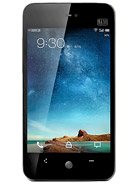 Today we’ll be reviewing the Meizu MX 4-Core. This is a really powerful phone despite the fact that Meizu isn’t exactly that famous worldwide. The hardware configuration of this phone is probably stronger than the device you’re reading this review from ( fact which is somewhat disturbing ). The Meizu MX 4-Core was previously called the Meizu MX Quad-Core. The previous name sounded somewhat better, in my opinion, however, in order to be politically correct during this review, I shall refer to this phone as it is called now – the Meizu MX 4-Core. Without any more dilly dallying with long intros, let us commence this little review.
Today we’ll be reviewing the Meizu MX 4-Core. This is a really powerful phone despite the fact that Meizu isn’t exactly that famous worldwide. The hardware configuration of this phone is probably stronger than the device you’re reading this review from ( fact which is somewhat disturbing ). The Meizu MX 4-Core was previously called the Meizu MX Quad-Core. The previous name sounded somewhat better, in my opinion, however, in order to be politically correct during this review, I shall refer to this phone as it is called now – the Meizu MX 4-Core. Without any more dilly dallying with long intros, let us commence this little review.
SUMMARY
We’ll start off by looking at a brief summary of the phone, as I promised a while back that I’ll start all my articles with such little summaries. The Meizu MX 4-Core is a really powerful phone, one of the most powerful at the current time, so it’s pretty much good at everything. It has a Quad-Core processor and graphics card as well, so it can work with any game or app available. I believe its only downfall is the fact that it isn’t available world-wide yet. If you want to take a better look at the phone, do keep reading as I will not post too much information in the summary.
GENERAL
We’ll start off the official review by taking a look at the general stuff about the Meizu MX 4-Core. Here you can find out a bit about the supported networks of the device and the announcement and release dates. The Meizu MX 4-Core uses both 2G and 3G networks. Those networks are as following : 2G ones ( GSM 850, GSM 900, GSM 1800 and GSM 1900 ) and 3G ones ( HSDPA 850, HSDPA 900, HSDPA 1700, HSDPA 1900 and HSDPA 2100 ). The Meizu MX 4-Core was announced in April 2012 and is expected to come out somewhere around this month – June 2012. That’s all that can be said for this part, so let’s move on now to the next part of the review.
BODY
Next up we’ll be taking a look at the aspect of the Meizu MX 4-Core. Here you can find out a bit of info about the size and weight of the device as well as see whether or not the Meizu MX 4-Core has any particularities that might set it apart from the rest of the Android phones. The Meizu MX 4-Core is around 121.3 x 63.3 x 10.3 mm big and it weighs somewhere around 139 grams. The only particularity of this phone is the fact that it has Touch-Sensitive Controls instead of frontal buttons. That’s about all that can be said for this part, so let’s move on now to the next one.
DISPLAY
Next up we’ll be taking a look at the display of the Meizu MX 4-Core. Here you can find out a bit of info about the type of screen, the screen size, the screen resolution and pixel density as well as see whether or not the screen has any protection or any particularities that might set it apart from the rest of the smartphones. The Meizu MX 4-Core has an ASV Capacitive Touchscreen with 16 million colors. The screen of this phone is around 4.0 inches big and can house a resolution of around 640 x 960 pixels. The pixel density of the Meizu MX 4-Core is around 288 ppi, which is phenomenal. Certain “experts” say that the human eye can perceive up to 300 ppi and anything below that is notice-able. Trust me when I say, only a very well trained eye can spot the differences between 250 ppi and 300 ppi. The Meizu MX 4-Core also has Multitouch, however, it isn’t the advanced sorts of multitouch which can support more than two simultaneous fingers on it. This phone, unfortunately, has no screen protection, so you’ll have to be extra careful with the handling of it. Also, the Meizu MX 4-Core lacks any other particularities aside from what is specified here. That being said, there’s no more to be said for this part so let’s move on now to the next one.
SOUND
Next up we’ll be taking a look at the audio output capabilities of the Meizu MX 4-Core. Here you can find out a bit about whether or not the Meizu MX 4-Core has any sound enhancement whatsoever installed on it ( be them software-based or otherwise ) since most people already know that Android Phones can support any sound as their Alert Type and that all phones have a standard 3.5 mm jack. The only sound enhancement of this device is that it has Stereo Speakers as its Loudspeaker. Other than that, there’s nothing left to say here so let’s move on now.
MEMORY
Next up we’ll be taking a look at the memory of the Meizu MX 4-Core. Here you can find out a bit about the RAM memory and the internal storage space as well as see whether or not said storage space can be upgraded and how. The Meizu MX 4-Core has 1 GB of RAM, which is pretty good. It would have been the best would it have come out 4 months ago. The internal storage space of this device varies since the Meizu MX 4-Core is available in two versions : a 32 GB one and a 64 GB one. Choose well when you choose yours as this phone has no Micro SD card slot on it. That’s all that can be said for this part, so let’s move on now.
DATA CONNECTION
Next up we’ll be taking a look at the connectivity of the Meizu MX 4-Core. Here you can find out a bit about the GPRS and EDGE of the device, the Speed and WLAN and the Bluetooth, USB and other ( if any ) connections. The Meizu MX 4-Core has both GPRS and EDGE, both of them at Class 12. While it isn’t specified what speed the EDGE can reach, there is quite a bit of info about the GPRS : it has 4+1, 3+2, 2+3 and 1+4 slots and can run at around 32 ~ 48 KB/s. The Speed of this device is a really fabulous one : HSDPA at around 21.6 MB/s and HSUPA at around 5.76 MB/s. The WLAN of this phone is a Wi-Fi 802.11 b/g/n with Wi-Fi hotspot. The Bluetooth of this phone is a v2.1 with A2DP and EDR. The USB port of this phone is a Micro USB ( MHL ) v2.0 one with USB On-the-Go support. That’s all that can be said for this part, so let’s move on now.
CAMERA
Next up we’ll be taking a look at the camera of the Meizu MX 4-Core. Here you can find out a bit about the main and secondary cameras ( if any ) as well as their features and capabilities. The main camera of this phone is an 8 MP one which can photograph at around 3264 x 2448 pixels. The features of this camera are as following : autofocus, LED flash, geo-tagging, smile detection and it also has a wide dynamic mode. The video recording quality of this camera is 1080p full HD at around 30 frames per second. The secondary frontal camera of this phone is a VGA one, so there’s no point in continuing here. Since there’s nothing left to say here, let us move on now.
BATTERY LIFE
Next up we’ll be taking a look at the battery of the Meizu MX 4-Core. Here you can find out a bit about the battery type of this device and see how long said battery can function. The battery of this phone is a Standard Li-Ion 1700 mAh battery. Sadly, my sources don’t say how long this battery can function, so you’ll have to find that out for yourself. Since I’ve nothing left to say here, let’s move on.
HARDWARE
Next up we’ll be taking a look at the hardware of this phone. Here you can find out a bit about the three main hardware components of this device : processor, motherboard and graphics card. The processor of this phone is a really powerful one : Quad-Core 1.4 GHz Cortex-A9. This most powerful processor is accompanied by a quad-core GPU as well – Mali-400MP and an Exynos chipset. That’s about all that I’m going to say for this part, so let’s move on now.
SOFTWARE
Next up we’ll be taking a look at the software version of this phone. Here you can find out a bit about the version of this phone and see whether or not it needs or can handle an update to a newer version. The Meizu MX 4-Core has Android OS v4.0 Ice Cream Sandwich on it, and since this is the latest version of Android at the moment, there is no need for an update in the near future. That being said, let’s move on to the last part of the review.
FEATURES
Last but not least, we’ll be taking a look at the features and capabilities of the Meizu MX 4-Core. The sensors of this phone are as following : Accelerometer, Gyroscope, Proximity and Compass. The messaging on this phone can be done via : SMS ( with Threaded View ), MMS, E-Mail, Push Mail and IM. The browser of this phone uses HTML and has integrated support for Adobe Flash. This phone has no radio, however, that’s not a problem since you can always install a radio app from the internet. The GPS of this phone has integrated A-GPS support and the Meizu MX 4-Core has Java via Java MIDP emulation. This phone is available in the following colors : Black ( but only on the front ) and White, Green, Blue, Pink and Violet ( on the back ).
Here is a brief list of what the Meizu MX 4-Core can do :
- MicroSIM card support only
- Active noise cancellation with dedicated mic
- TV-out (via MHL A/V link)
- S/PDIF
- SNS integration
- Google Search, Maps, Gmail, Talk
- MP3/WAV/eAAC+/FLAC player
- MP4/H.263/H.264 player
- Organizer
- Document viewer
- Photo viewer
- Voice memo/dial
- Predictive text input
This concludes our little review of the Meizu MX 4-Core. If you feel that anything is lacking from this review feel free to leave your suggestions in the comment section below for things which should be added and I will be sure to take them into consideration when writing my future projects. In the meantime, I sincerely hope you had as much fun reading my little review as I had writing it.





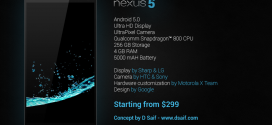
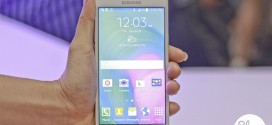
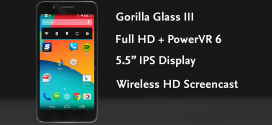
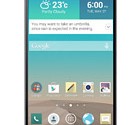
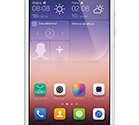
…about Sound… you forgot to mention that this is currently the only Android phone with SPDI/F digital interface. Basically it allow you to send digital audio out to external portable DAC. Which potentially could make the combo to sound way better and powerful than any other smartphones…
Good to know. Although, I must admit, when I wrote this one I didn’t really have much info to get inspiration from. Thanks for the feedback though.